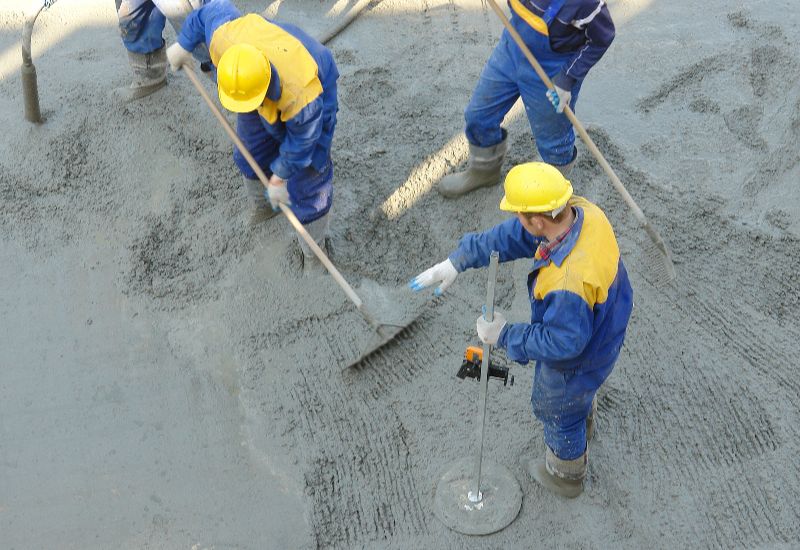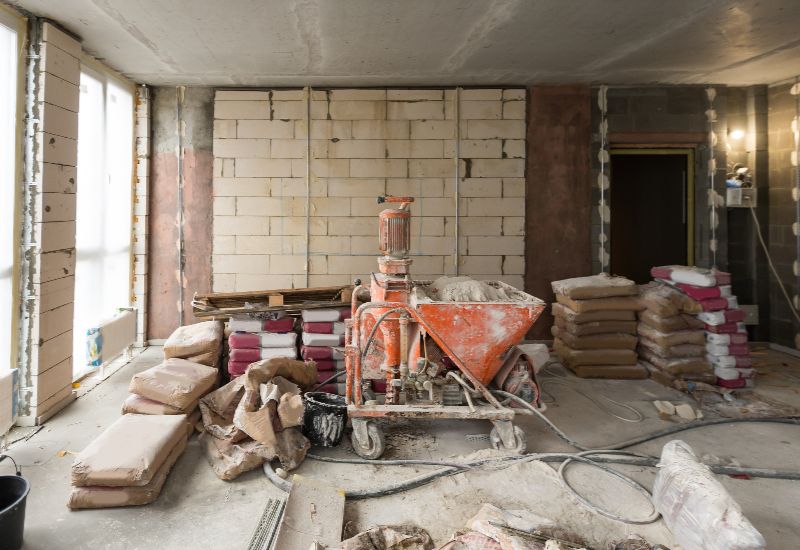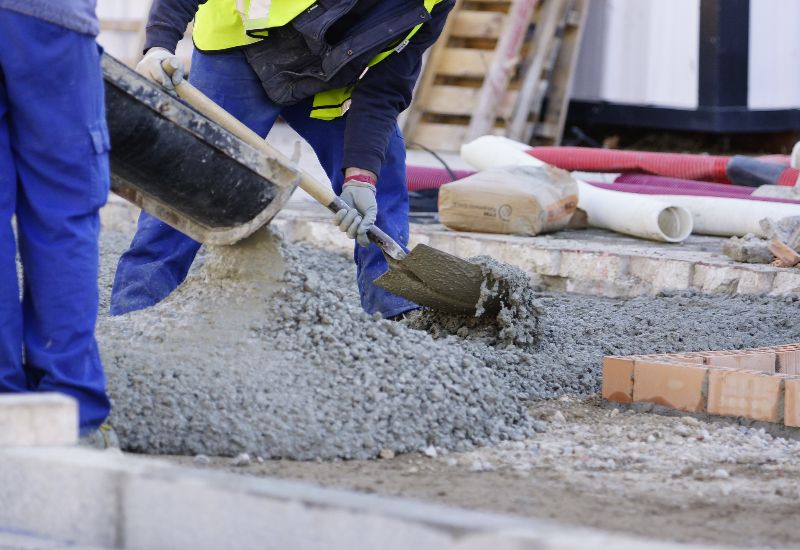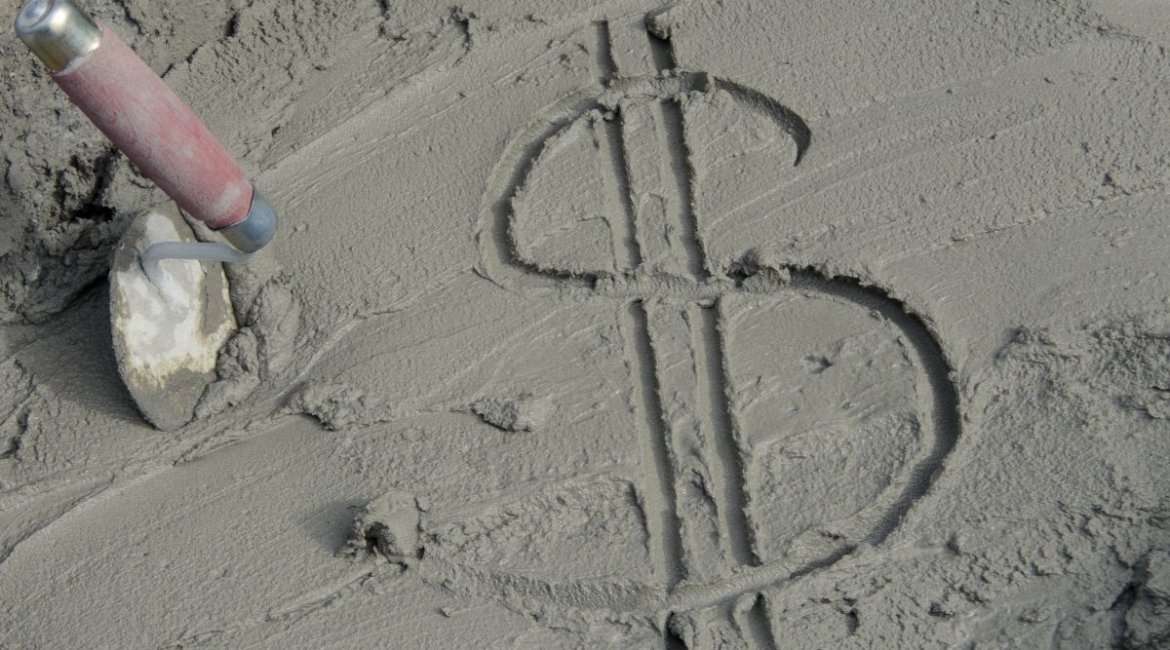In South Africa, in our construction industry, having the right tools is key to your profits, and few tools carry as much daily weight as the humble concrete mixer, which is, in essence, the beating heart of any building site. However, at BS Power, we know that when shopping for one, it can be easy to get trapped by price tags. In fact, opting for the cheapest model on paper can actually end up costing much more over its lifespan once you consider fuel, downtime, and the replacement of moving parts.
That’s why, for any contractor working on tight margins, understanding the total cost of ownership or TCO is vital. It is not all about the purchase price; it’s actually about how that machine performs, how frequently it breaks down, what it consumes, and how long it lasts before you need to replace it.
In this BS Power guide to concrete mixers, we’re going to break down all the real costs of using a concrete mixer in South Africa, from fuel to spare parts, crew productivity, and teach you how the right investment can pay for itself many times over.
Why The Upfront Cost In Buying A Concrete Mixer Isn’t Everything
Many smaller contractors/companies start out by chasing the lowest price. While a R14,000 concrete mixer might seem tempting next to one that is R19,000, this is only appealing until the cheaper one burns through fuel, needs new bearings in under six months, and until it loses half its resale value in less than a year. The lesson here is that initial savings will disappear fast when performance and build quality are not present.
So, let’s put this in context: a mid-tier 400 L mixer with a Honda GX 160 engine might cost you more upfront, but run with peak performance for at least five years with regular servicing. On the other hand, a cheaper import might need a full drum bearing replacement within a year, which adds labour downtime and spares costs that will exceed the initial difference.
We recommend this rule of thumb: try to evaluate your purchase over a five-year period by asking yourself how often the mixer will require maintenance, whether parts are easy to source locally (for example, through us at BS Power), and what the estimated resale value will be.
In a nutshell, it’s not the initial invoice that matters; instead, it is the cost per cubic metre of mixed concrete over the machine’s lifespan.
The Lifecycle View
A concrete mixer should not be something that one considers as disposable equipment; it’s an asset that pays itself off in hours saved, jobs completed, and crews kept busy. You should treat it as an investment, and you will quickly see how a quality build can pay you back: with fewer breakdowns, smoother batching, and much higher output. When one calculates the total lifecycle value, premium components like Honda’s engines or heavy-duty ring gears, this becomes cheaper in the long run, simply because they work harder for longer, without letting you down mid-job.
The Operating Costs Breakdown Of Quality Concrete Mixers
When you understand where your money really goes, you’ll be able to make much smarter decisions and have control over your budget for long after the initial purchase.
Concrete Mixers’ Fuel & Engine Efficiency
Say, for instance, you’re using a petrol 400 L concrete mixer on your site, you can expect about 1.5 to 2 litres per hour of petrol consumption during continuous use. And over a typical 6-hour pour day, that is around R360 – R420 in fuel at current fuel prices.
On the other hand, electric mixers do come with lower running costs, but they do require stable power, which is something that isn’t always a guarantee when working on rural or remote job sites. That’s why most contractors opt for Honda GX160 petrol engines, as they are known for their reliability, lower emissions, and excellent service networks here in Mzansi.

Spart Parts And Wear & Tear
It’s no secret that concrete mixers endure demanding conditions, which means certain components are particularly prone to wear. Common wear parts include the drum paddles and bearings, which should typically be replaced every 6 to 12 months, depending on usage. Additionally, the ring gears and drive chains require inspection every 3 months to ensure optimal performance. Finally, engine belts and filters also have their own standard servicing intervals that should be adhered to for reliable operation.
Cutting corners on spares is basically a false economy. While using non-genuine parts might save you R300 today, they will shorten the lifespan of your drum by a season. That’s why at BS Power, our mixers we stock use standardised components, which means replacements are always readily available, which reduces your downtime.
Labour, Maintenance And Downtime
Every hour that a concrete mixer remains idle on site will cost you more than just fuel; it will cost you crew time. So, for example, say that you’re paying a four-person team around R100 per hour each. A breakdown that lasts two hours will burn R800 before you have even resolved the issue.
If you multiply that by three incidents in a month, you’ll lose over R28,000 per annum, which is enough to purchase a second mixer outright.
That being said, proper preventative maintenance schedules and operator training, which includes cleaning the drum after each batch, greasing the bearings, and checking the oil, can drastically reduce these losses.

The Depreciation & Resale Value Of Concrete Mixers
Any contractor knows that the best tools actually pay for themselves, and a premium concrete mixer is no different. The way you purchase, use, and properly maintain your mixer directly determines how valuable it will be over time.
What Really Drives Resale Value?
First thing you need to know is that concrete mixers don’t depreciate evenly, as their resale value hinges on four major factors:
The brand’s reputation and engine pedigree – buyers opt for and trust engines such as the Honda GX160 and GX200, which are BS Power stocks in the 360 L and 400 L models. Both these units are well supported here in SA, with reliable servicing and parts readily and easily available, and that brand confidence keeps resale value strong.
The drum and blades condition – a mixer with a clean and dent-free drum and intact paddles points to proper maintenance. Pitting, rust, or even warped blades can halve your asking price.
Proper maintenance records – ensure that you keep proof and record of oil changes, bearing swaps, and ring-gear inspections. Having a laminated logbook dangling off the frame can instantly add perceived value to the mixer.
Parts & support access – all mixers we stock at BS Power utilise standardised components and offer local spares, so future buyers know that the upkeep won’t be a headache.
How To Keep Your Value High
Before reselling any concrete mixer, make sure to clean the drum exterior, check your bearings for noise, and replace any worn belts or blades. When you present a tidy, ready-to-work machine, it shows professionalism, and also typically earns you a higher return at trade-in or a private sale.
Our Cost Comparison Between Buying, Renting And Leasing
When you’re deciding on how to acquire a concrete mixer, the decision might not always be “buy it outright”. Many contractors commonly weigh between buying, renting, or leasing, but each has its own pros and cons. The right choice boils down to your workload, capital, and project pipeline.
Buying a concrete mixer outright gives you full control, as you own the equipment and can use it whenever required.
There are no rental fees eating into your margins, and if you maintain the mixer well, you can benefit from strong resale value. However, this option involves a higher up-front capital expense, and you will also be responsible for all maintenance, repairs, and any downtime costs.
Renting or hiring a concrete mixer requires a low capital outlay, as you only pay for the equipment when you need it. This approach also provides access to larger models when tackling bigger jobs and relieves you from long-term maintenance responsibilities. However, renting comes with some drawbacks. There may be limited availability during peak construction seasons, and the costs associated with rental rates, transport, and deposits can accumulate. Additionally, if there are any delays or downtime caused by delivery issues, you are still responsible for paying the rental fees.
Leasing or financing with balloon payments offers advantages such as lower monthly payments compared to a full purchase, which can help preserve your cash flow. At the end of the term, you have the flexibility to buy the equipment, return it, or renew the agreement. However, there are drawbacks to consider. The accumulated interest can increase the overall cost, and typical finance packages often require a matching revenue or usage level. Additionally, you may still be responsible for maintenance and insurance costs.
How To Make A Sound Decision
Analyse the usage patterns, i.e. if your business pours frequently, and your project pipeline is steady, the ownership often pays back via savings. Take into account the hidden logistics, which include transport, rental delivery times, and the availability of spares, which can swing the overall equation.
Be sure to have backup options, as owners sometimes rent as a standby backup, and it helps to be flexible here. Always negotiate terms, ask the rental house for weekend or multi-day discounts, and finance houses for lowered balloon values.
Cost Levers: Productivity VS Efficiency
Once you have your concrete mixer on the job site, the real savings do not come from fuel or financing; they come from productivity. Conducting well-organised pours can make one mixer actually feel like two, while having a sloppy workflow can turn even the best of machines into a bottleneck.
Faster Batching Equates To Lowered Labour Costs
You should think of your concrete mixer as part of a system, not merely a standalone tool. Every batch has a rhythm, the loading, the mixing, and the discharging, as if one of these stages stalls, everything else will follow.
To break it down, a 400 L mixer is capable of producing approximately 0.35 m³ of concrete with each batch. Operating on 20-minute cycles, this equates to about 1.05 m³ of concrete per hour. Over the course of a 6-hour workday, the total output would be around 6 m³ of concrete, which is sufficient for pouring a 60 m² slab at a thickness of 100 mm.
Proper Overlapping Cycles & Crew Synchronisation
The best contractors on-site work like clockwork. As soon as one batch is ready to be discharged, the next should already be loading, as this overlap diminishes downtime between pours.
Be sure to assign your crew roles strategically: the loader is responsible for measuring and loading the sand, stone, and cement; the water man adds water with precision; the runner moves mixes to the pour point as the next batch begins; and the finisher is in charge of levelling and vibrating.

Why BS Power Makes The Numbers Work
When you purchase concrete mixers from us at BS Power, you’re essentially investing in reliability, uptime, and local support networks that keep your crew on the job. All of your Honda-powered mixers are built tough for South African sites, delivering performance that lasts with strong resale value. Visit our site today to view our full range of concrete mixers.






